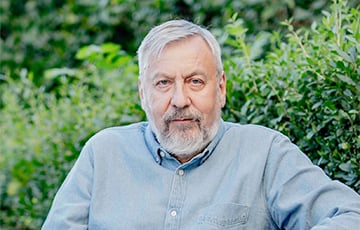This Reason Little Talked About
22- GIUSEPPE PERRI
- 17.09.2024, 15:09
- 39,486

On why Russia attacked Ukraine.
On February 24, 2022, Russia decided to launch a large-scale invasion of Ukraine, using the conflict in Donbass as a pretext and demanding the recognition of two quasi-republics in these Ukrainian regions. One of the main reasons for the armed intervention is the territorial and demographic one. The goal is to take as much territory and population from Ukraine as possible.
This goal was confirmed by Russia's decision to annex as many as four Ukrainian regions in September 2022. Therefore, this is an anachronistic and barbaric territorial war, a neo-imperialist one.
Russia intended to control the entire Sea of Azov and the central-northern part of the Black Sea in order to be able to hegemonise the rest of the Black Sea basin. It wanted to annex Crimea territorially to Russia, both for geographical reasons and because it was almost impossible to rule Crimea without controlling the inner areas up to the Dnipro. In fact, all of the peninsula's major energy and water supplies come from there.
However, the territorial motivation is combined with another element closely related to it, but rarely mentioned by observers - the demographic factor.
It should be taken into account that Russia is experiencing a serious demographic crisis. First of all, among the many ethnic groups that make up Russia, it is the Slavic and Russian parts that have the lowest growth rates. The share of the Slavic part in the total population of Russia is gradually decreasing. In the future, this may affect both the cohesion of the country and its prevailing cultural patterns.
Adding tens of millions of Ukrainians to the total number of Russian citizens would mean an increase in the proportion of Slavic citizens. This would give Russia a stable demographic situation. By demanding from Viktor Yanukovych in 2013 to join the Customs Union and the Eurasian Union, the Putin regime thought it could get this result avoiding war and an obvious violation of international law.
The Ukrainian Revolution of Dignity thwarted this plan and prompted the Kremlin to use subversive means, first by hybrid warfare and disguised forms of separatism, and then by attempting a large-scale invasion.
The Russian population is now insufficient to govern the territory of Russia itself, as Vladimir Putin stated in his final press conference on December 23, 2021. It is true that since 1992, Russia has recorded a negative annual demographic balance as a result of recent trends of declining birth rates and increasing abortions. However, the roots of this go back to the historical past.
In 2006, the Russian Academy of Sciences published a weighty study that sounded the alarm on the demographic situation in the country and estimated human losses in the twentieth century with a birth rate figure at least 140 million lower than in previous periods in Russia. Above all, the reason was mass murder and the policy of collective sacrifice on the part of the state.
These trends cannot be changed in the short term. All forecasts indicate that the demographic decline will continue in the future. The current crisis appears to be systemic and structural due to cultural factors such as changing family patterns, causing a reproduction rate of less than 1.5 children per woman, lower average life expectancy in Russia compared to Western countries, economic problems, limited access to health care, emigration and the inability to attract significant masses of immigrants.
In this context, at the end of October 2018, the Russian President issued a decree ‘On the Concept of State Migration Policy of the Russian Federation for 2019 - 2025’. Its aim is to facilitate immigration of Russians from other former Soviet republics.
The situation has worsened in recent years, partly due to the coronavirus, and reached a record negative balance of more than half a million residents in 2020. The war also affects the demographic situation in Russia, not only because of the number of deaths, but also because of the migration flow it creates, forcing many residents (Russian citizens and foreign workers) to leave the country. Also, the war strongly discourages new immigrants.
The war will certainly have a further negative impact on a crucial psychological and cultural element: it affects the decisions that potential parents make about having children. Independent demographers estimate that the already low number of births could fall by a further 10 per cent in the coming years if the war and sanctions continue. This would be Russia's lowest birth rate in 250 years.
So, we can conclude that the main natural resource that Russia wanted to draw from its neo-imperial war is of a biological and demographic nature: to steal as much of the population of the Ukrainian state as possible and remake it into ‘Russians’ in order to use it as a demographic mass. This demographic mass should increase the density and population of the revived Russian Empire.
A clear proof of such intentions is the provoked deportation of many inhabitants of the Russian-occupied regions of Ukraine and above all the mass abduction of children, a crime for which the International Court of Justice issued an arrest warrant against Putin.
This demographic goal was partly negated by the unexpected resistance of the Ukrainian army, which prevented the rapid colonisation of Ukraine, and by popular demonstrations of commitment to the Ukrainian nation in the Russian-occupied regions. Therefore, during the war, this objective was accompanied by the objective of weakening Ukraine demographically by provoking mass emigration caused by deteriorating living conditions. Unable to take over the entire population and territory of Ukraine, Russia cynically wants to turn an independent Ukraine into an unpopulated wasteland without infrastructure.
Giuseppe Perri, ‘Channel 24’











